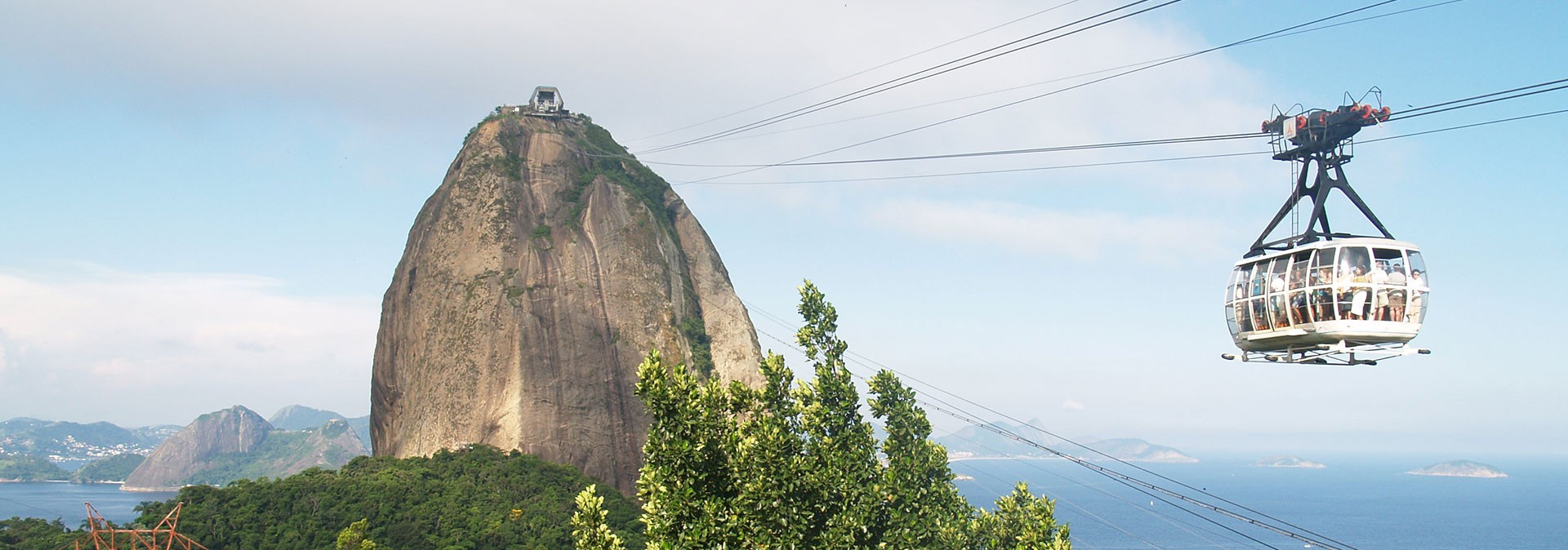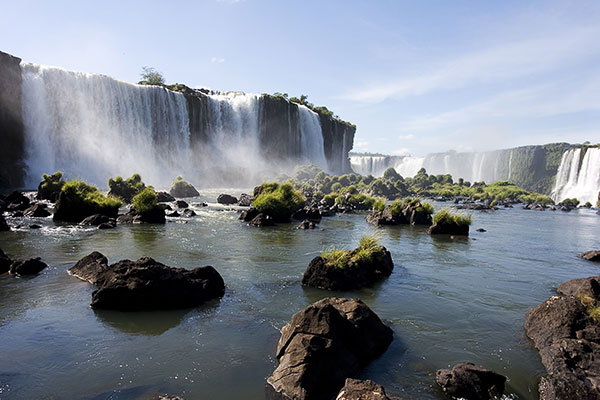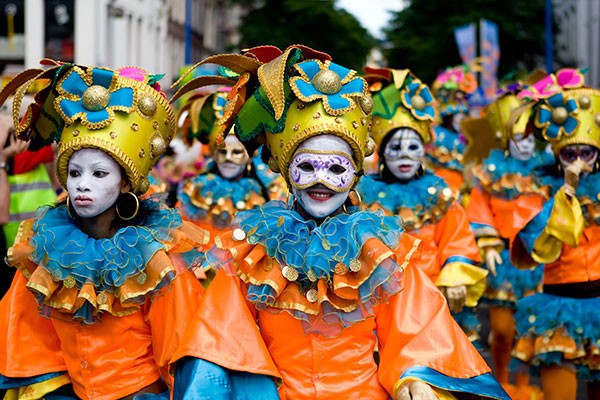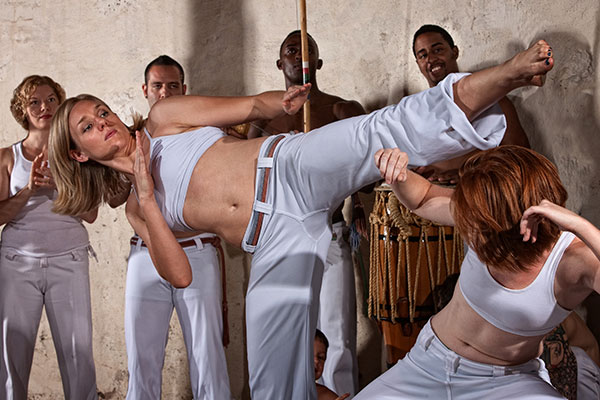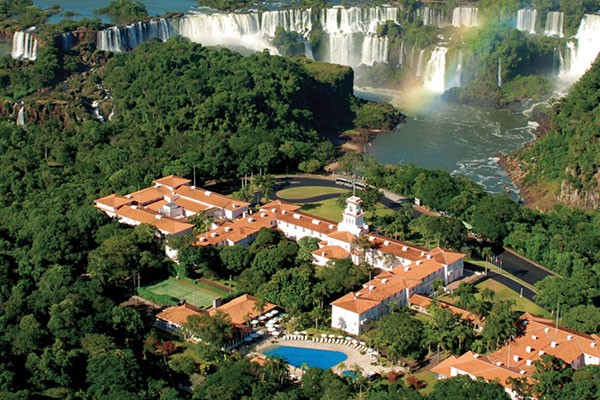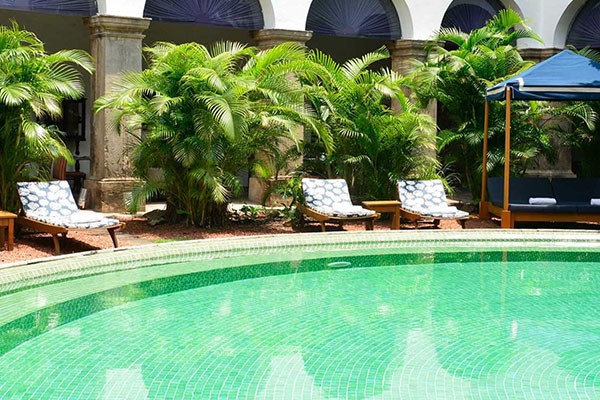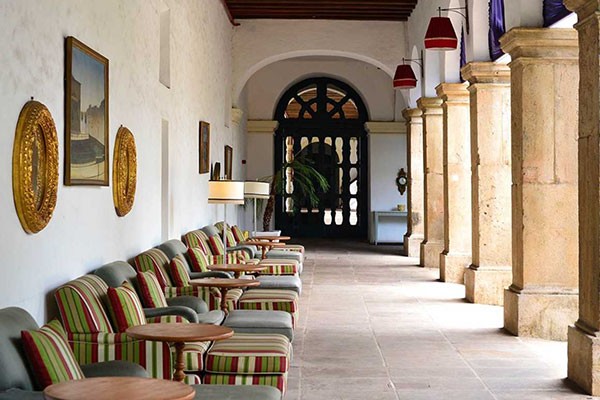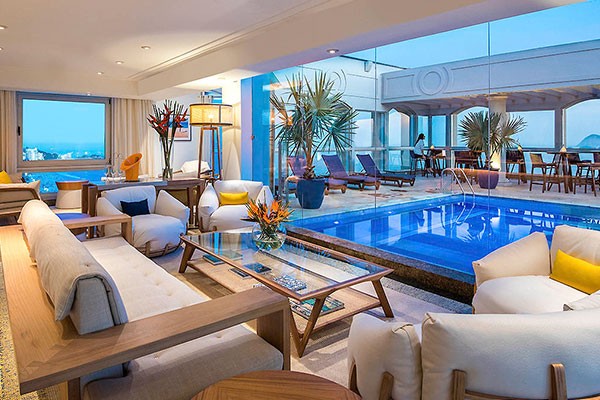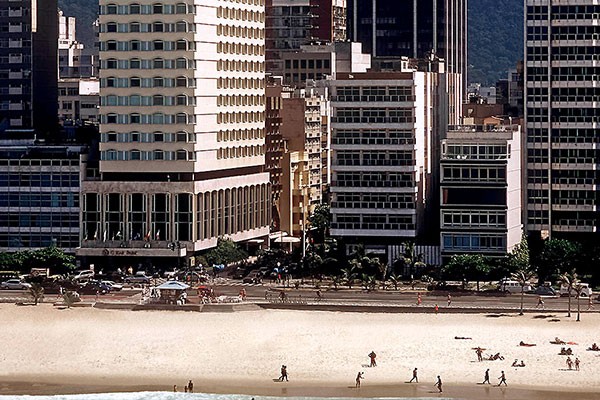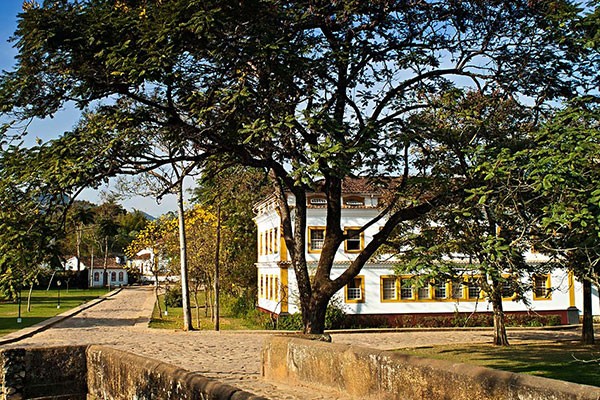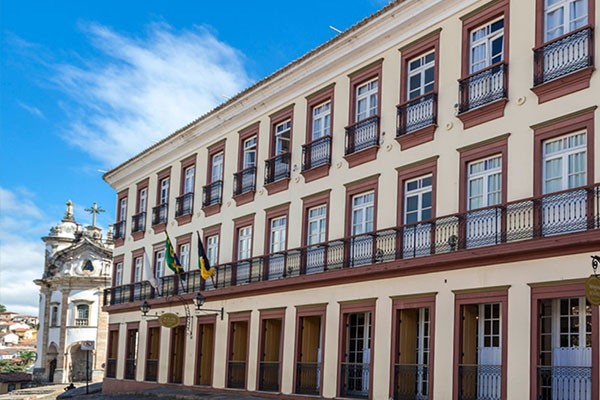Day 1: Rio de Janeiro
Arrive in Rio and enjoy an afternoon of relaxation. Rio de Janeiro is nestled between the mountains and the sea. Its magnificent shoreline includes charming bays and beautiful beaches, dotted with islands up and down the coast. Flying into Rio is a beautiful sight, whether it be at night or during the day, the visitor quickly finds out why Rio is known as the Wonderful City, a center for art and fashion. The beach is part of the carioca's life. Most everybody goes to the beach either to practice sports, meet with friends or simply to relax. The beaches in Rio are an exciting and unique experience not only for the beauty of the place and people, but also to feel and share what the carioca most has to offer; simple happiness and the joy of life. Night activity: Brazilian live music with private guide. Your private night guide will take you to experience the night live in Rio like a real “carioca”, enjoying a good beer and dancing to Brazilian rhythms.
Days 2-3: Rio de Janeiro
Today, we have a full day tour visiting the highlights of Rio's unmistakable skyline and main attractions; Sugar Loaf Mountain & the Corcavado (Christ the Redeemer). Corcavado is reached by cable car and offers breathtaking views of Rio. The journey is done in two stages: firstly, to the top of Urca Hill, where visitors catch the second car to their final destination. Corcovado, then in the late afternoon we visit the Suger Loaf Mountain. On top of the 710m high Corcovado Hill in Rio de Janeiro is one of the world's most famous tourist attractions: the statue of Christ, the Redeemer, with its open arms blessing the whole city. From here you can admire the fantastic combination of beaches, deep blue waters, mountains, forests From Sugar Loaf Mountain, the endless beaches of Rio de Janeiro and Niterói stretch to the horizon and urban areas all inter-connected.
In between these two landmarks we visit the area of bohemian Santa Teresa: Rio's Montmartre! You can't miss a visit to this unique part of Rio. Sometimes described as the Brooklyn of Rio, Santa Teresa is one of those once grand, later marginalized, again revitalized neighborhoods. It is sprinkled with run-down colonial houses that you stumble upon and discover new worlds. Santa Teresa is a place where you can feel the atmosphere of art, music and history. Charming little restaurants, bistros and bars add a touch of both sophisticated and simple gastronomy options.
Day 4: Belo Horizonte & Ouro Preto
Morning Private transfer to the airport in Rio de Janeiro Janeiro, Flight to Belo Horizonte, Transfer to Ouro Preto (2 hours drive), Check in at hotel. The Historical Cities of Minas is an “off the beaten path” expedition that combines natural beauty with a lot of history and culture. The local people, Mineiros, known for their welcoming and friendly way of life, making this trip a real immersion into the local people. The local dishes are flavorful and surprising even for the most refined palette. You will follow the old gold rush route from the historical and world famous colonial towns of Ouro Preto, the first Brazilian town to be declared as a World Heritage Site and the cozy and charming town of Tiradentes, which is in the baroque circuit. Known for its cobblestone streets, churches, arts, nice restaurants and small familiar Pousada, this little town will certainly enchant you.
Day 5: Ouro Preto
Today we have a full day tour in Ouro Preto, founded at the end of the 17th century, Ouro Preto means Black Gold, and was the focal point of the gold rush and Brazil's golden age in the 18th century. With the exhaustion of the gold mines in the 19th century, the city's influence declined but many churches, bridges and fountains remain as a testimony to its past prosperity and the exceptional talent of the Baroque sculptor Aleijadinho. Ouro Preto begs to be explored on foot. Yes, the cobblestone streets can get quite steep, but take your time and the rewards will be worth it.
Day 6: Congonhas & Tiradentes
Morning private transfer to Tiradentes (about 2.5 hours drive) with stop in Congonhas which contains important works from the Golden Age of Brazil. The main points of interest are Aleijadinho’s sculptural masterpieces of the twelve Prophets, carved in soapstone and his sculptural representation of the Via Crucis (Stations of the Cross), done in polychromatic woodwork. The set of life-sized sculptures is Brazil’s greatest artistic. On to Tiradentes and check in at Pousada Solar da Ponte. Though for very different reason, the Solar da Ponte is much like the Eagle’s “Hotel California” – you may never leave. Located in the heart of Tiradentes, this B&B is the perfect home base for exploring the historic town of Tiradentes. The 12 rooms are all uniquely furnished with antiques, harmonious color schemes, fresh flowers, and a comfortable couches and chairs. In the afternoon, the restaurant offers a complimentary tea to restore your energies from a day of strolling the streets. Overnight in Tiradentes.
Day 7: Tiradentes & Sao Joao del Rei
Full day tour with private guide: Tiradentes and Sao Joao del Rei. Tiradentes - Along the centuries, Tiradentes has preserved all its charms from the opulent era of the gold fever. The revolutionist Joaquim José da Silva Xavier, "Tiradentes" (dentist in slang) was born in this village. After being murdered, he became the great martyr of the Republic. The best thing to do is to leisurely stroll around its narrow streets, enjoying each place for its own particular beauty. This tropical environment is enriched by the Mata Atlantica surrounding the village, itself elevated on the slopes of the Serra de Sao Jose, with footpaths traversing the mountains. The "Matriz" church of Santo Antônio de Tiradentes is one of the most beautiful examples of Brazilian Baroque art. It has preserved a Portuguese organ from the seventeenth century, painted by Manuel Vitor de Jesus. Half a ton of gold was used to decorate its interior, evidenced by the gilded flower garlands on the elegant altars and the chancel.
Another highlight is the Portuguese organ, imported in 1788, with the exterior casing, designed in Brazil, covered in rococo carvings and paintings. A stone staircase leads to the plaza and to a soapstone sundial made by local craftsmen in 1785. The façade and the entrance were designed by Aleijadinho in 1732. In the afternoon we visit Sao Joao Del Rei - All the religiousness of the Portuguese colonial period may be seen in Sao Joao Del Rei, expressed by the devotion of its inhabitants during the Holy Week, and at holy days all along the year. A magnificent work of art in it’s own right, the church of São Francisco de Assis constitutes the first work of master Aleijadinho with curved lines, with its atrium in the shape of a lyre, surrounded by a marble balustrade. Overnight in Tiradentes.
Day 8: Belo Horizonte & Iguassu Falls (Brazil Side)
Morning private transfer to the airport in Belo Horizonte (about 3.5 hrs drive). Flight to Iguassu Falls, private transfer to hotel in Iguassu. The falls is without a doubt majestic and breathtaking. Situated on the border between Brazil and Argentina, they lie 19 km upriver from the confluence of the Rio Iguassu and the Rio Alta Parana. The river rises up in the hills near Curitiba and flows 1,300 km across the Parana Plateau enroute receiving the waters from about 30 rivers before reaching the falls. Here are 275 falls plunging over a precipice of more than a mile and a half, with an average drop of 300 feet to the river below. These falls are 60 feet higher than Niagara and about one and a half times as wide. Eleanor Roosevelt is said to have exclaimed on first seeing these falls: "Poor Niagara! This makes Niagara look like a kitchen faucet."
Afternoon Brazil side of the falls walking tour with private guide. Starting from the tropical hotel veranda, the pathway zigzags down the side of the gorge and trundles along the cliff face, providing views across the narrow gorge at water cascading down in a hundred different places. There are 275 separate waterfalls, with an average drop of 197 ft. While you walk, you'll see colorful butterflies fluttering about the trail and grumbling coati (a larger relative of the raccoon) begging for food. At the end of the trail an elevator will lift you up to the restaurant by the edge of the falls. Before going up, take the elevated walkway leading out in front of one of the falls. The wind and spray coming off the falls are exhilarating and guaranteed to have you soaked in seconds. Overnight in Iguassu.
Day 9: Iguassu Falls (Argentina Side)
Morning half day walking tour to see the Argentina “lower & upper circuit” with private guide. The Lower Circuit requires more physical effort due to its stairs but it can be perfectly done if you take it nice and slow, catching your breath on the different viewpoints, it goes all the way down the river. The Lower Circuit offers the best views, as magnificent waterfalls come hurtling down before you in walls of silvery spray. The Upper Circuit winds its way along the top of the canyon, allowing you to look down the falls and see the area's rich flora, including cacti, ferns, and orchids. The best time to walk the Upper Circuit is early in the morning or late in the afternoon, and rainbows often appear near sunset. Devil’s Throat is the mother of all waterfalls in Iguazú, visible from observation points from both the Brazilian and Argentine parks. You'll notice that the water is calm as it makes its way down the Iguazú River, and then begins to speed up as it approaches the gorge ahead. In front of you, Mother Nature has created a furious avalanche of water and spray that is the highest waterfall in Iguazú and one of the world's greatest natural spectacles. You might want to bring a raincoat -- you will get wet.
Afternoon La Gran Aventura boat tour (group activity). This is a not to be missed tour! Going up river in these boats specially prepared to get to the base of Iguassu Falls and to be able to admire and feel them from up close. Whirlpools, waves and currents provoked by the Falls add adrenaline and lots of emotions to this unforgettable tour. In the Iguazu National Park (Argentina), big trucks specially adapted to this tour will take visitors to explore 6 kilometers in the humid subtropical forest as far as the banks of the Iguazu River, downstream from the Falls. From here participants will board special boats that will take them, at high speed, to enjoy one of the most unforgettable experiences in the region: the direct and wet contact with the mighty Iguassu Falls! After this incredible emotion participants will get off the boat at the base of the Falls, on catwalk that connects to the lower visitation circuit of the Falls. This tour can be started in the reverse direction, from this catwalk downwards ending with the jungle truck ride. Overnight in Iguassu.
Day 10: Campo Grande & Pantanal
Private morning transfer to the airport in Iguassu Falls, flight to Campo Grande, private van transfer from Campo Grande airport to the lodge. The drive takes about 4 hours. You will have both paved highways as well as dirt bumpy road. Check in at Refúgio Ecológico Caiman & welcome drinks. Welcome to the Pantanal , the largest wetland in South America, and the largest wetland in the world that has not been substantially modified by humans. While endemism in the area is low, the sheer abundance of large birds, reptiles and mammals mark its importance as a huge reservoir of biodiversity. Much of the eco-region remains intact. Its rivers govern the Pantanal rhythm. In the wet season (Nov-Apr), rivers swell and spill over to cover a vast alluvial plain for months. Millions of birds are attracted by this aquatic paradise, as mammals mound of dry land. As the water drains (from May onwards), the land dries up and the situation slowly reserves: animals congregate around the few remaining water pools. Fish get trapped in these pools, and bird and mammals alike gather for water and food as they wait for the rains to start.
The Refúgio Ecológio Caiman is the most luxurious lodge in the Pantanal, the Refugio Caiman is set on a huge cattle ranch outside the town of Miranda, The land is not as rugged as in the North Pantanal years of ranching; draining and road building have left their mark. However, the refugio is still every bit the working cattle ranch. Every morning ranch hands head out to look after the cattle. In the late afternoon they practice rodeo moves in the corral.Activities here are very safe and "soft adventure". Huge jabiru storks, flocks of roseate spoonbills, egrets of all shapes and sizes, caiman gators, and capybaras can all be seen within steps of the lodge. Hyacinth macaws are frequently spotted, partially thanks to an on-site preservation project. The food is outstanding and the accommodations, in an old hacienda with a new central pool, positively luxurious.
Day 11: Pantanal
Daily tours are done in group activities, two daily activities are offered. Private activities are available upon request. Morning Photo Safari: tour in open vehicles. A tour in an open vehicle is the best way to reach places far from the farm. Crossing fields and stretches of jungle, this tour broadens opportunities to observe and photograph the wild life. The vehicle is used for longer photo safaris.
At night the guests go out to do “night spotting”: to observe, with the help of flashlights, nocturnal animals, as alligators, capybaras, anteaters and small wolves. Afternoon Horse back ride; this is one of the best ways to explore the Pantanal , allowing for visits to areas, which are inaccessible by other means, like local flooded areas, where the water is too deep for motorized vehicles or too shallow for other boats. The horses in the Pantanal, which are raised in the region, are stout, strong and have water-resistant skin, and are adapted to crossing long distances of flooded fields. These horses are trained for inexperienced riders, making it easy for everyone to observe different environments in the Pantanal, from flooded fields to open vegetation and even forests with large trees.
Day 12: Pantanal
Morning Hiking Tour; taking place mainly on trails through heavy bush, the hikes make it easy to observe forest vegetation and the animals that live there, as “quatis” (raccoon-like mammals) and monkeys. There are approximately 12 different hikes, which are taken on different days to assure the permanence of the animals in each area. The trails begin in bush with vegetation that is typical of the Pantanal , as long grass and coppice, and in transition areas, as in the open pastures. They allow visitors to get to know an even larger variety of animals and plants in the region. The hikes leave on foot from the hotel, or are part of the photo safari.
Candian Canoe Tour – the Refúgio Ecológico Caiman offers Canadian canoe tours on the lakes within the ranch. In such tours while canoeing round the shores mammals such as capybaras, and monkeys on the shoreline trees can be seen. Amongst the birds that commonly inhabit the area are: cormorants, anhingas, skimmers, herons and egrets. The sounds of the animals and birds will enrich your senses. Guests on the tours travel through Pantanal with sounds of toucans, herons, parakeets, jacanas and kingfishers and with a spell of luck capuchin and howler monkeys.
Day 13: Campo Grande & Salvador
Private transfer to Campo Grande airport. The drive takes about 4 hours. Flight to Salvador, private transfer and check in at hotel. Anyone visiting Salvador in Bahia will immediately discover why the state is called "the land of happiness". Salvador is a city you feel moved by from the moment you arrive. African influences are everywhere. The local exuberance is expressed in an unbelievably rich folklore, which includes capoeira, candomblé and samba-reggae. Salvador is also the land of the endless carnival. It is affectionately said that “When Bahians are not actually participating in a festival they are rehearsing for one." Evening show at the “Bale Folclorico da Bahia”, with its dancers, musicians and singers, represents the culture, the traditions, the beliefs, the history, the colors, the music, and the movements of the people of Bahia. The internationally renowned, 38-member troupe performs folkloric dances of African origin, which include slave dances, capoeira (a form of martial arts), samba, and dances that celebrate Carnival. The troupe is known for its passionate, frenetic style that often has audiences dancing in the aisles. The company made its debut in July 1988 and, later that year was awarded the prize, "Best Performance of the Year" granted by the Brazilian Ministry of Culture through the National Institute of Dance. Click here to
learn more about the Bale group.
Day 14: Salvador
Morning African Oriented tour with private guide starts in the modern suburb of Barra at the mouth of the Bay with its famous lighthouse and make your way slowly to the old historical section of town, the Pelourinho area with the largest and the best preserved complex colonial architecture in the Americas. You stroll through the narrow, bustling streets lined with buildings in pastel shades of an age gone by. You visit the church of S. Francisco with its exuberant gold-leafed Baroque interior and the Pelourinho Square, the heart of the old town.
This tour shows two distinct aspects of Salvador, the new and the old, concentrating on the early expansion of the city. Stop at Mercado Modelo a thriving market for local artifacts. Afternoon Panoramic City Tour with private guide to the lower city tour takes us to the quiet waters of the Itapagipe Peninsula where the first holiday residences were built. Now, a peaceful family district, life moves at a slower pace than the bustling upper city. Fishermen fish from dug out canoes, locals collect shellfish at low tide, schooners are at anchor, all protected by the famous Bonfim church, one of the most important churches of pilgrimage in Brazil. We continue to Monserrat district with its panoramic view of the city, a thriving market for local artifacts.
Day 15: Salvador
We begin our full day tour Cachoeira Country Ride – We leave the city behind and drive through the oldest farmland in Brazil. This is the land of sugar cane and tobacco plantations, peaceful colonial towns and busy country markets. We visit an experimental cacau plantation. We lunch in Cachoeira, a charming colonial town in a beautiful setting on the banks of the Paraguassu River and later taker a walking tour of the town with it's many wood sculptors ateliers, bustling market and visit the Sisterhood of the Boa Morte, a sorority which traces it's origins back to the time of slavery.
Day 16: Lencois & Chapada Diamantina
Morning private transfer to the airport in Salvador, flight to Lençois, private transfer and check in at Canto das Águas. Chapada Diamantina, It is one of the most fascinating natural parks of Brazil. The mountain scenery contains an extraordinary variety of ecosystems, like Cerrado, Mata Atlantica, and Stone fields, Caatinga. The bromeliads and orchids find a privilege ambiance, adapting themselves to the differences in climate, altitude. The cities that border the National park are filled with colonial buildings representing the architecture of the time, a vivid memory of the richness of the time of the diamonds, which made Brazil the first world producer of the mineral during the beginnings of the XX century. The trails opened by the garimpeiros (searchers of precious minerals) are opened today for the enjoyment of hikers and trekkers from around the world. The average altitude is over 3000 feet.
Afternoon Serrano River tour: A short walk to the Serrano natural hydro massage pools and then the colored sand caves nearby. Then a short trek to the Cachoerinha, Primavera and Paraíso falls for a swim in these mountain pools.
Day 17: Lencois & Chapada Diamantina
Today's full day tour starts at Mucugezinho River with a short walk of about ten minutes downstream to the Devil’s Pool. This is the perfect location to swim. You can also go rappelling and ziplining if you like. The next stop is Pai Inácio Mountain, which is at 3,900 feet, there is a splendid view of the Chapada Diamantina. Pratinha cave is next with crystal-clear waters and tiny sea shells at the entrance of the cave creates an increadibly surprising oasis of beauty. A local guide can be hired to go scuba diving 390 feet into the cave with flippers and a flashlight. In the same area there is another cave called Blue Cave. It has this name because the sun rays enter at 2:00 o’clock pm and the light in the crystal water turns an unforgettable blue. Swimming is not permitted here. After a short drive we are at another cave; Lapa Doce Cave. It is a huge limestone cave with curious stalactites and stalagmites.
Day 18: Lencois & Chapada Diamantina
Today our goal is to reach the Sossego waterfall, we will hike through the beautiful Sossego canyon. As we arrive we forget about the difficulties on the hike and take a relaxing bath on this superb waterfall. On our way back we will take another trail and will head to the "Ribeirão do Meio" known as the natural tobogan of the Chapada. After we head back to Lençois.
Day 19: Departure from Chapada Diamantina
Morning check out of hotel and private transfer to the airport in Lençois, connect to your departure city and your return flight back home.


